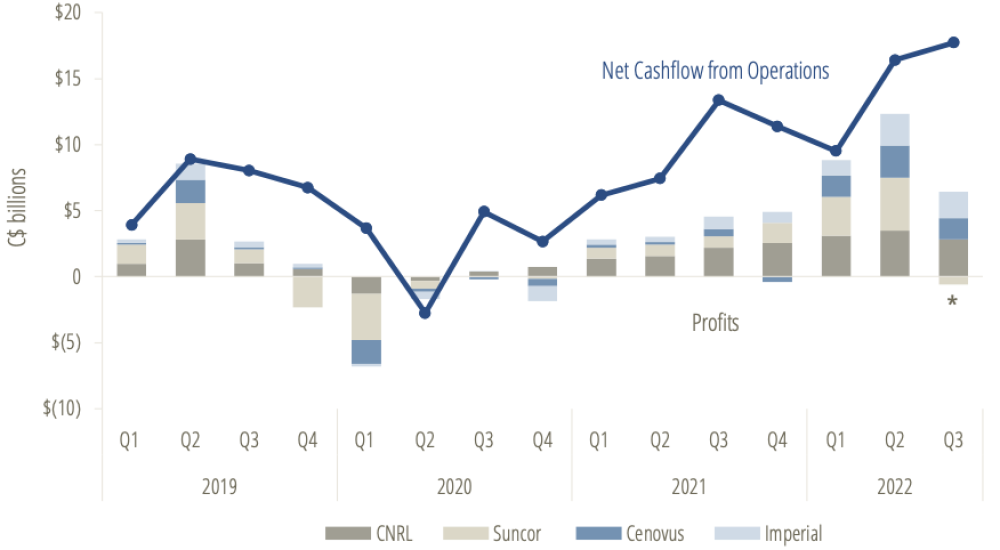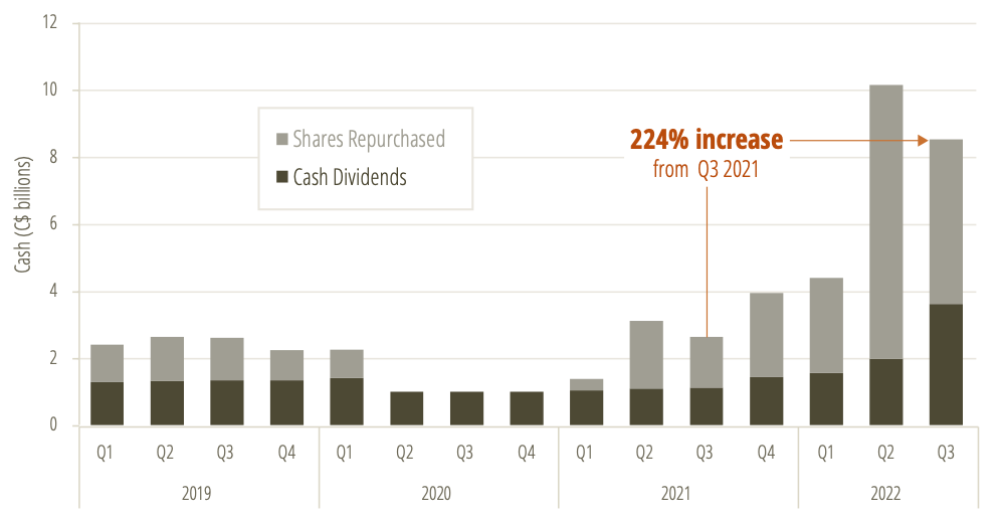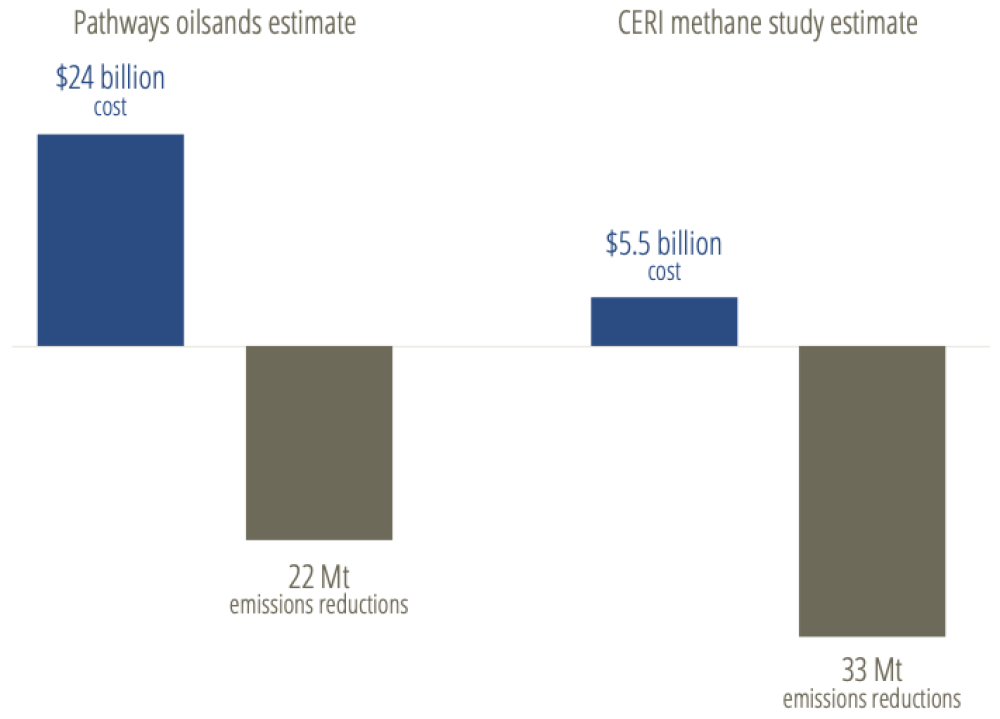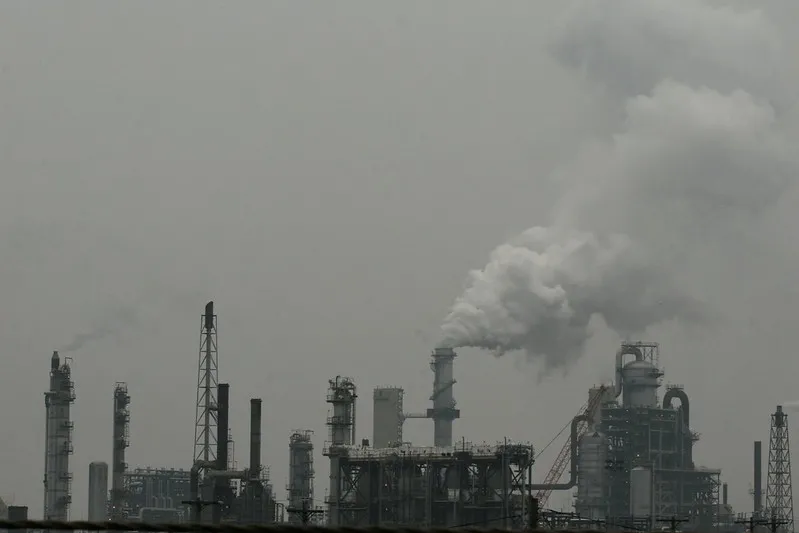CALGARY, AB and SHARM EL-SHEIKH, EGYPT – Oilsands companies have yet to make tangible progress on their climate promises, again prioritising shareholder rewards over allocating capital to decarbonization investments, amid continued high profits in Q3 2022.
Tomorrow, Friday November 11, members of the Pathways Alliance – an industry grouping which represents some 95% of production in Canada’s oilsands – will present to delegates at the Canada Pavilion of COP27 in Egypt.
Waiting to Launch, Third Quarter 2022 Update, released today by the Pembina Institute, serves as an addendum to our original September 2022 report that examined gaps between Pathways companies’ climate pledges and actions.
Key findings include:
- Third quarter financial results show that, while there was a small dip in profits compared with Q2, levels of cashflow continued to increase in Q3 – meaning Pathways members have significant sums of money available to make investments in decarbonization measures.
- Meanwhile, the rate at which this cash is being returned to investors through share repurchases and dividend payments also remains exceptionally high.
- Despite some announcements in recent weeks from Pathways on the “advancement” of their emissions reduction plans, it remains the case that most details of these plans remain undisclosed.
- Although companies have indicated that it is too early to reach final investment decisions on large multi-year carbon capture (CCUS) projects, there are non-CCUS measures that Pathways has also committed to, that are comparably inexpensive and quicker to implement, such as efficiency projects. However, there has also been no significant progress on these other non-CCUS projects.
- Meanwhile, the largest opportunity for emissions reduction in the wider oil and gas sector – which includes the conventional assets of two of Pathways’ largest members, CNRL and Cenovus – is cutting methane emissions. We are expecting further discussions on oil and gas sector methane to take place at COP27 in the coming days.
- On CCUS, there are other details aside from final investment decisions — such as project specifics and timelines, capital allocations, or timelines for final investment decisions — that have still not been released.
- Conversely, one Pathways member, Suncor, has recently announced it will invest $1 billion to increase its share in the Fort Hills mining project — demonstrating that companies remain willing to invest in assets.
Key graphs
1. Profits slightly down overall, but net cashflow of four largest members of the Pathways Alliance continued to grow in Q3.
*Suncor’s Q3 2022 profits included a one-time non-cash asset impairment of $3.4 billion due to a lower expected value of future revenues from the Fort Hills mine. This is the main driver for net profits to be negative. Operating earnings in Q3 2022 for Suncor was approximately $2.6 billion compared to approximately $1.0 billion for the same period in 2021.

2. Cash returned to shareholders from four largest Pathways Alliance companies remains exceptionally high.

3. Research shows that using existing, proven technology to cut methane emissions from Canada’s oil and gas sector would result in 50% more emissions reductions than the Pathways plan, at a fraction of the cost.

Quotes
Jan Gorski, director of the Pembina Institute’s oil and gas program, said:
“While we remain supportive of the Pathways Alliance’s overall vision for decarbonizing their sector, COP27 serves as an important reminder of the pace and scale of action needed globally to avoid the worst impacts of climate change. By attending the UN climate summit, we hope that these industry leaders will recognize this urgency, move away from aspirational promises, pledges, and requests for further public funding – and instead to tangible emissions reductions strategies that are available to them right now.
Other global oil majors, such as Saudi Aramco and ExxonMobil, have committed to reducing their methane emissions to near-zero by 2030. Canadian oil companies should follow suit – and take advantage of the skills and expertise that exist in Canada’s burgeoning methane reduction sector. Governments – both provincial and federal – can do their part by designing more stringent regulations that are aligned with the near-zero methaneby 2030 benchmark.”
Interviews
Pembina Institute experts are available to respond to interview requests, both from our offices in Canada and on the ground at COP27 in Egypt.
[30]
Contact
Alex Burton
Communications Manager, Pembina Institute
825-994-2558
Background
Report: Waiting to Launch, Third Quarter 2022 Update
Report: Waiting to Launch: The gap between Canadian oilsands companies’ climate pledges and actions
Report: Success in Eliminating Methane in Alberta’s Peace River Region: a case study




